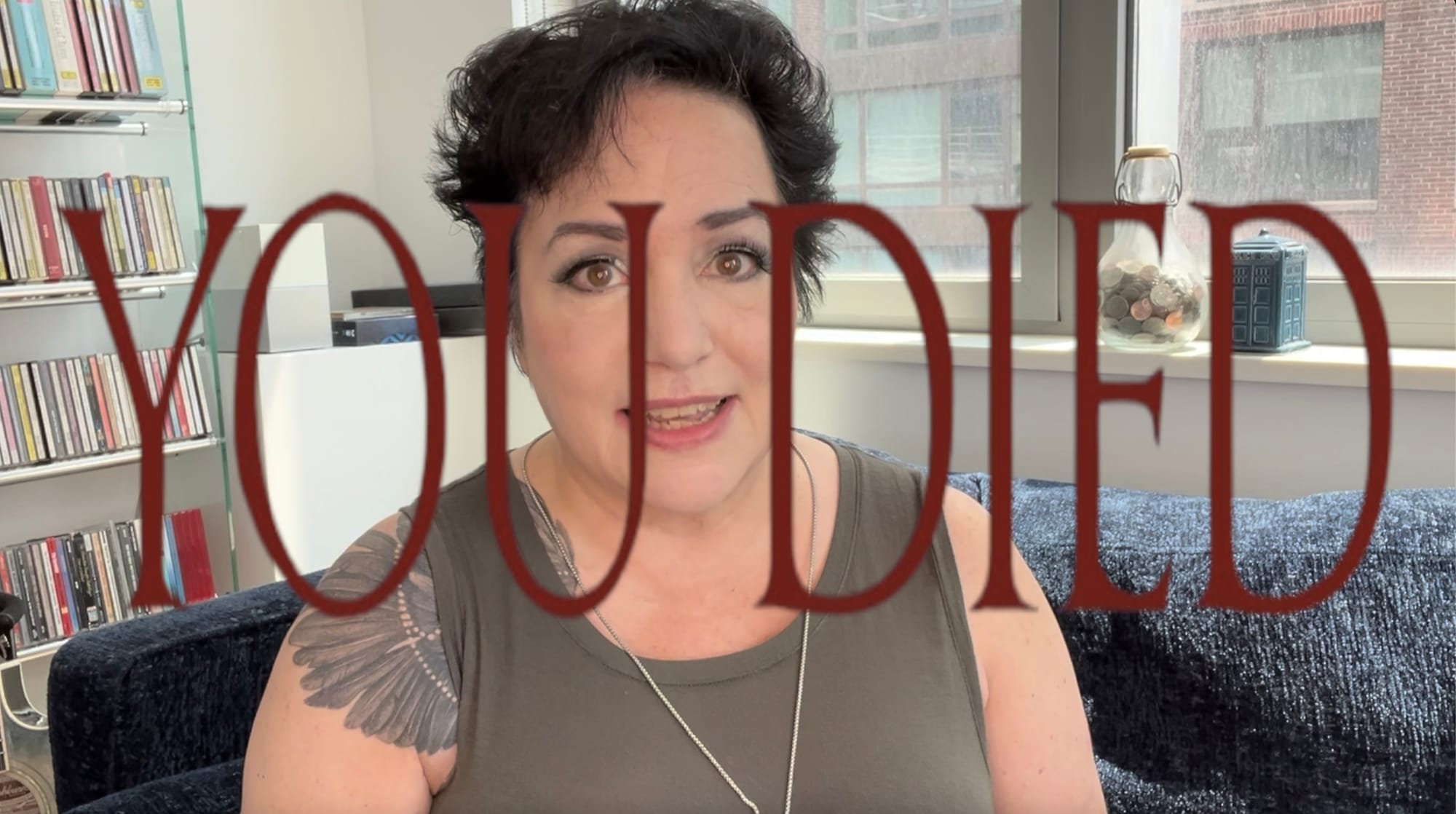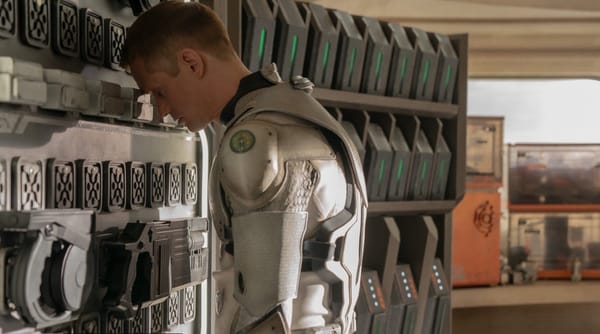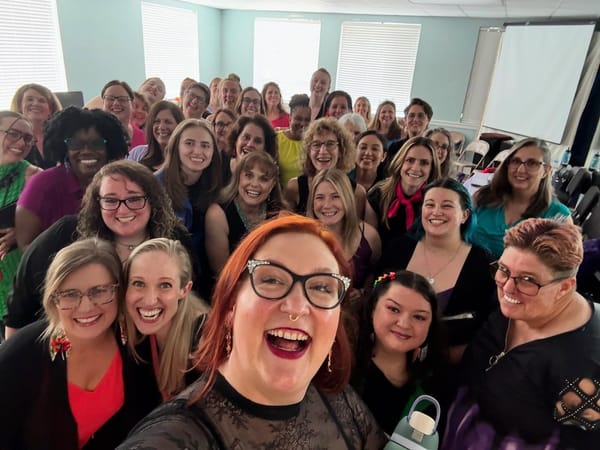Dexterity
When you want to improve a particular type of coordination, remember that you’re not bringing a blank slate to the process. At least some of the coordination you have already habituated is likely to be at cross purposes with the new coordination you wish to develop.
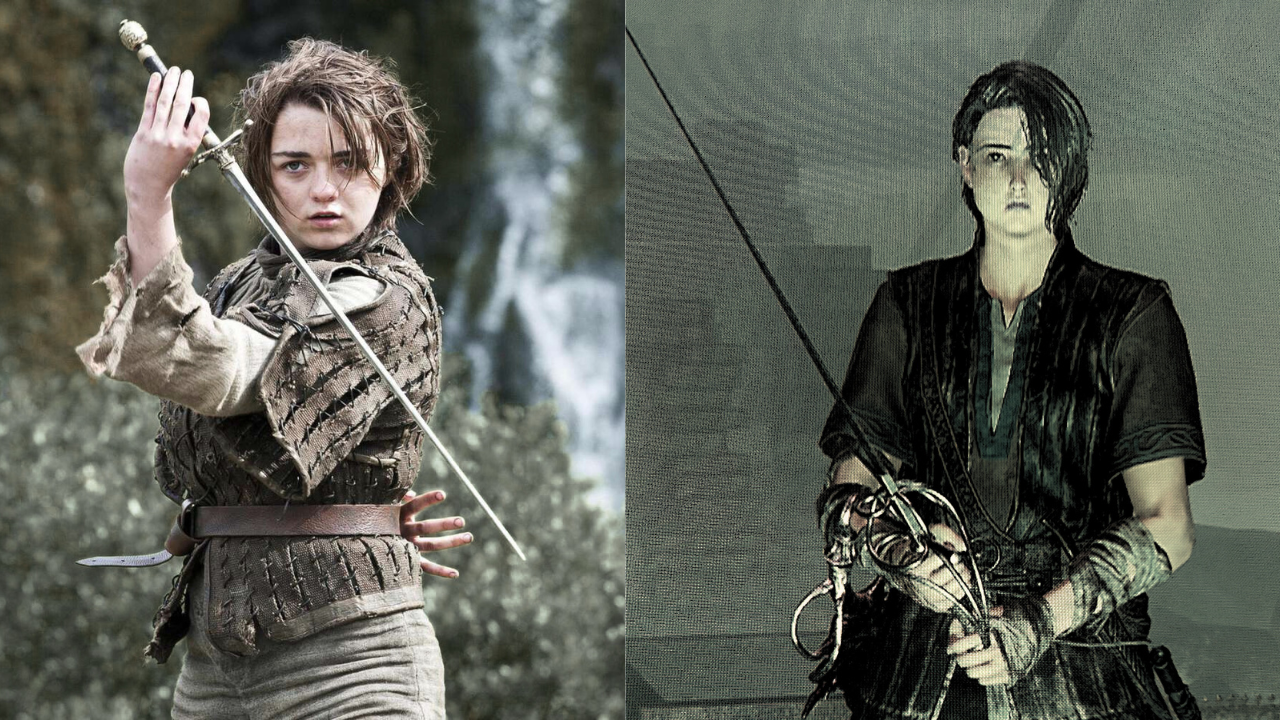
Throughout our lives, we continually shape and train our bodies through our movements. More about that in a moment. First I need to tell you about my current quest to stand before the Elden Ring, and become the Elden Lord.
Elden Ring is an epic role-playing game featuring a mythological backstory from the imagination of George R. R. Martin, the storyteller who brought us Game of Thrones. In the game, the once-great realm known as the Lands Between has been thrown into chaos and violence when the Elden Ring—the realm’s source of power and order—was shattered. When Queen Marika’s demigod offspring vied for the Ring’s shards, the Lands Between were consumed by violence, madness, and decay. Enter the Player as one of “the Tarnished”, an exile summoned to bring the demigods to their knees, uncover forgotten lore, and strive to become Elden Lord, either to restore balance or to reinvent the world in their own image.
Confession: I have now been playing this game on and off for three years without completing it. Each attempt has been more successful than the last, and I have enjoyed each one—this is such a gorgeous and immersive game!—but my learning curve kept hitting a ceiling. To my chagrin, I have a friend who essentially eats Dark Souls bosses for breakfast. I’ve watched them play Elden Ring and its predecessors for years, without being able to fathom how they knew exactly when to dodge, when to strike, and what armor and weapons to equip.
In role-playing video games, you move your character by mashing buttons and moving sticks on a controller in specific sequences. Your inputs translate into actions like attacking and dodging. Whether you are successful depends on precise timing and execution of these sequences, especially during intense battles. It’s an intricate digital dance—one poorly timed input, and you get the YOU DIED screen (again).
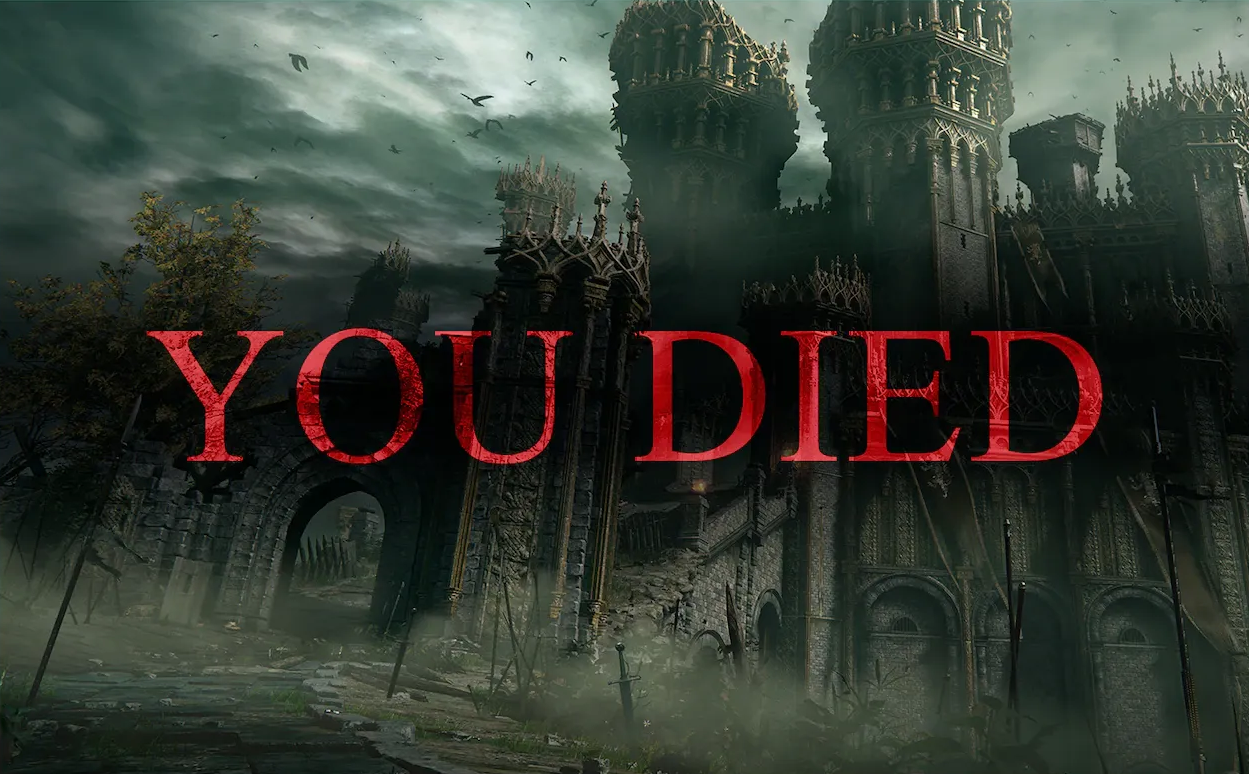
Previously, my MO was to level up my avatar to be as powerful as possible, while accumulating the deadliest weapons and ammo I could find. My motivation was to basically just “get as far as I can without dying (again)”. However, the game’s enemies get progressively bigger and stronger. It is impossible—by design—to keep up with them.
Enter Arya Stark of Winterfell.
I recently marathoned Game of Thrones. At its conclusion, Arya—diminutive master of stealth, ruthless wielder of rapiers and daggers—is sailing west into uncharted territory. And it hit me: she is being summoned to the Lands Between!

Role-playing Elden Ring as Arya put an end to my aimless hacking, slashing, retreating, and frequent dying. Because unlike my former unwieldy avatars, Arya consistently moves with purpose. She knows her assets and her limitations. She has clear preferences where her strategies and her weapons are concerned. And she is motivated. She is not here to kneel to decrepit demigods or chase glory. She is here to forge a path through the madness and rot, to cut down would-be tyrants, and to determine who deserves to rule what’s left.
I/she took down the first big boss with just her Needle and her dire wolves.
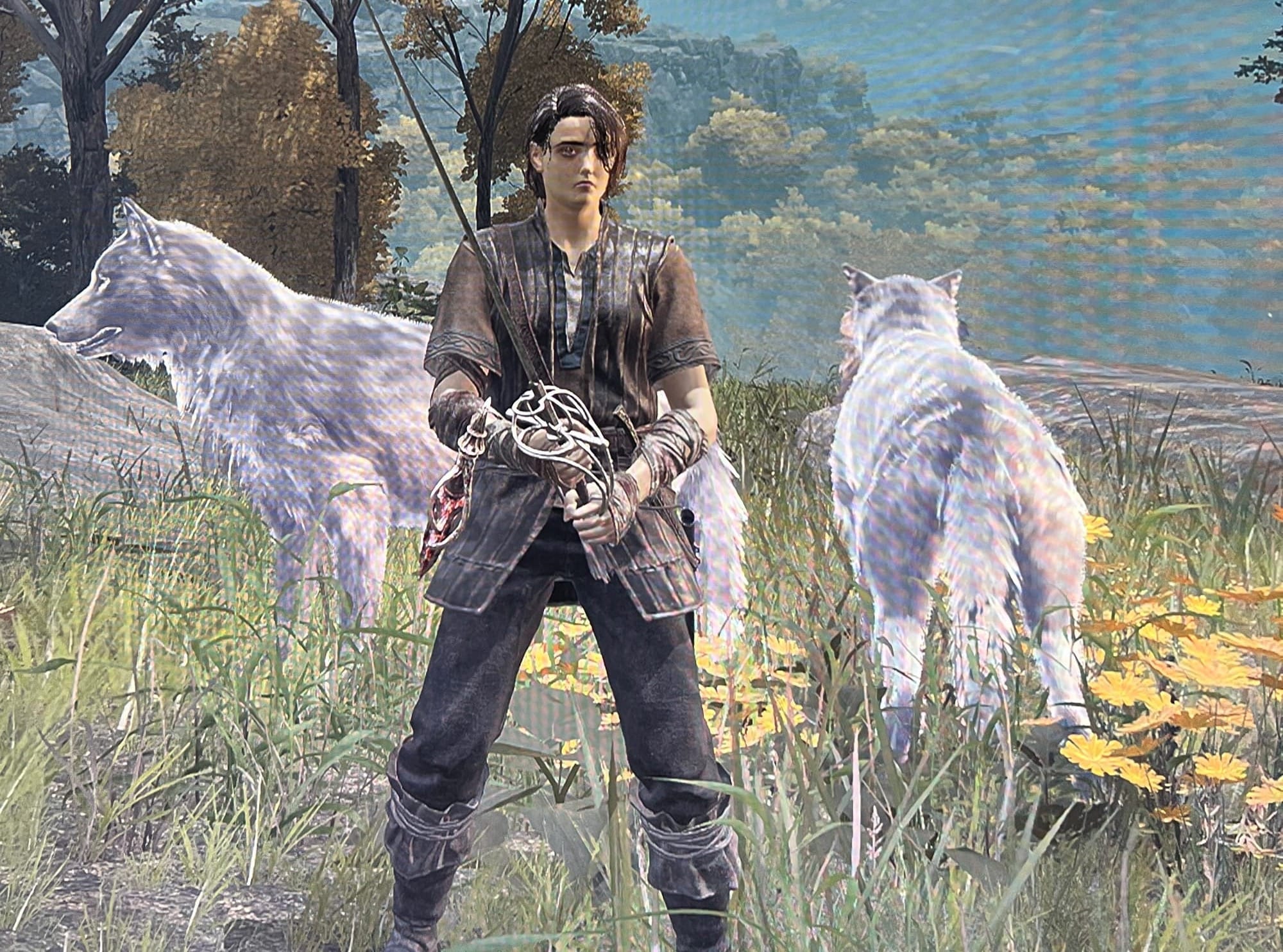
Last week I discussed the importance of both conditioning and coordination for vocal training, and I thought it might be both fun and clarifying to talk about conditioning and coordinating my Elden Ring avatar.
- The “conditioning” part is how you level up, i.e. which of your avatar’s attributes you decide to buff. You can build them up to be a total tank that wields colossal weapons, for example, but it’s stealth, speed and dexterity that define Arya’s battle skills. The way you condition your avatar is similar to the way you would condition your body, or your voice—gradually and incrementally.
- The “coordination” part involves learning and practicing the precise sequences of button-mashing and stick-moving that will result in the attacks and dodges. The real-time practical application of your coordination involves carefully studying your opponents’ moves, in order to accurately time those sequences of button-mashing and stick-moving to be able to stick ’em with the pointy end, then get the hell out of the way before they crush you.
- The reason that I’m the one doing the crushing while they’re the ones doing the dying (mostly) is that my conditioning is now strategic, and I am taking the time to develop my coordination. The main difference is that I’m patiently assessing my [digital, thus predictable] opponents’ moves, rather than just running away when The Enormous Scary Thing comes charging at me.
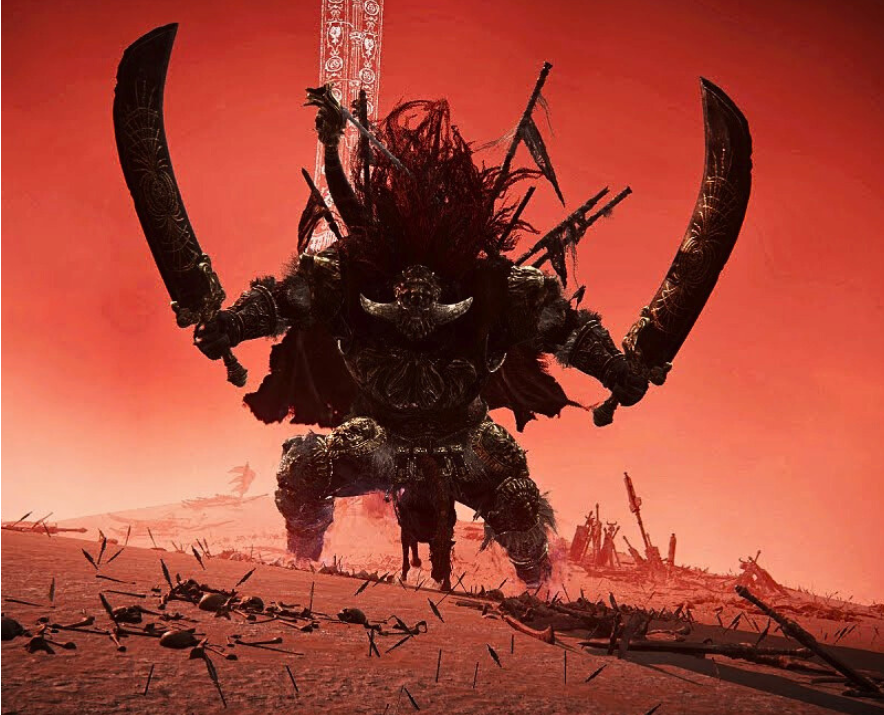
It might seem as though the fine motor control required for all this button-mashing and stick-moving has nothing to do with the complex coordination required for singing in meat space, but hear me out:
- Have you ever tried to get a high note to come out better by throwing your voice at it over and over again while crossing your fingers?
- What about insisting on singing a long slow phrase on one breath, even if it necessitates squeezing out all the air you’ve got left and finally gasping when it’s over?
- Or attempting riffs or coloratura that require a swifter execution than you can currently manage?
High notes, stamina, and vocal dexterity are all examples of skills involving the precise coordination and timing of physical movements. If it’s your MO to just go for it again and again, your coordination may improve a bit. After all, my Elden Ring skills did. But if you invest the time and patience to understand the coordination you’re trying to develop, practice the required movements and movement combinations, and time your phrasing to align with the overall flow of the music—that is what will enable you to nail it, with panache.
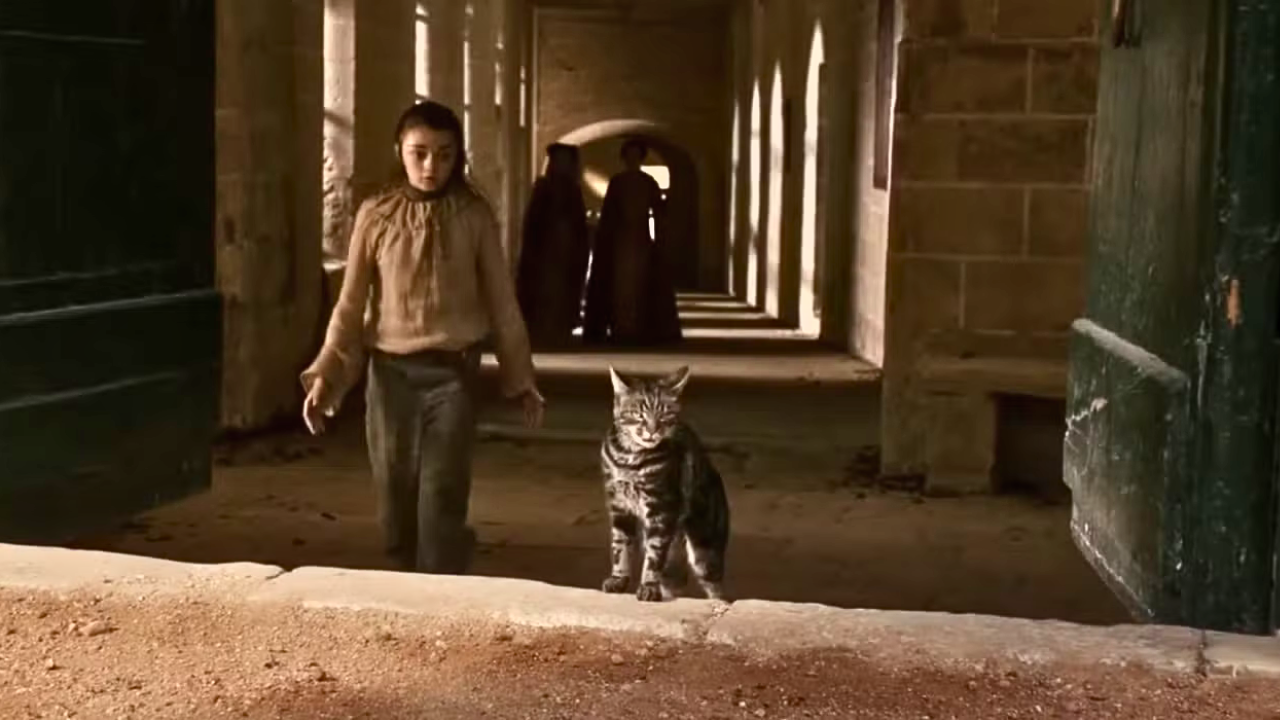
Throughout our lives, we continually shape and train our bodies through our movements. While our anatomy develops in accordance with our DNA (i.e. our “code”) and can be influenced by illness or injury, our bodies are essentially the result of the way we have built them—through every movement, exertion, and nutrition decision we make. And we can change them, simply by making different decisions regarding movement, exertion, and nutrition.
I am not here to advise you how to change your nutrition and exercise habits. I just want to point out that the way I am right now reflects the cumulative result of everything I have done, experienced, and consumed. I am pretty sure that the same is true for you. If we want to change how we are, in the service of developing the coordination we desire, we will need to make different decisions regarding movement, exertion, and nutrition—with intention, precision, and consistency.
When you want to learn or improve a particular type of coordination, it’s important to remember that you are not bringing a blank slate to the process. You bring with you the body that you already built, and the coordination that you already developed and habituated. At least some of the coordination you have already habituated is likely to be at cross purposes with the new coordination you wish to develop. Where skill at singing is concerned, the habituated coordination you will probably need to deconstruct includes:
- Articulation/Resonance: The way our speech habits condition our articulators and resonators usually does not result in consistent resonance and clear diction for singing. Good coordination for singing requires decoupling habituated jaw, tongue, and lip movements, so that we can learn to move these structures independently from one another and coordinate them together more intentionally.
- Vocal Registration: The reason so many singers think they have a “break”, or even a “hole”, in the middle of their range, is because of the way our speaking voices tend to develop. Many, if not most of us, learn to speak in a fairly low, narrow range, with comparatively heavy registration. The higher we try to sing, the more unsustainable it becomes to use the heavy registration we developed for our speaking voices. Developing skill at registration means learning to adjust the weight of our vocal production in order to sing higher, lower, louder, and softer, with continuity and consistency. This is harder to do if you begin with the concept that you “have” some sort of built-in break or hole in your voice. You don’t. You just have some habituated coordination that you need to deconstruct and then retrain.
- Breathing: The way you breathe in daily life, during a cardio workout, swimming, or doing yoga, is different from the breath coordination you need to develop to support your singing. You need to learn to take a well-coordinated inhalation that is precisely timed and precisely full enough to execute each phrase you sing, and the coordination will differ for each phrase and each context in which you sing it.
My point is that if you’ve ever tried to get a high note to come out better by throwing your voice at it over and over again, or tried and failed to perform a long slow phrase on one breath, or tried to sing a riff over and over again while wondering why it doesn’t come out fast or clear enough… you’re basically practicing your singing the way I used to play Elden Ring!
Your coordination might get better over time, and you may still really enjoy singing. But if you work more strategically on your coordination, by deconstructing habituated movements and coordinating them more intentionally, you will get better faster, and you will not only enjoy your singing more, you may even find that you really enjoy practicing. The process will provide you with an ongoing positive feedback loop, your frustration will be greatly diminished, and the vocal equivalent of the YOU DIED screen will become a distant memory.

Next week I will share my strategy for breaking down singing coordination into trainable components. Meanwhile, if you’re playing Elden Ring and happen to come across a summon sign for a player called “no one” that looks suspiciously like Arya Stark of Winterfell, hit me up! I’ll help you make short work of that Enormous Scary Thing.
